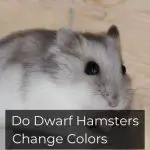Hairless Hamster: All You Need to Know
Hairless hamsters, also known as Sphinx or naked hamsters, are a unique and interesting type of pet hamster. They are often kept as pets and are known for their friendly and sociable nature.
But what are the most important factors regarding hairless hamster? One important aspect is their unique care needs. As they lack fur, they are more prone to overheating. They may also be more delicate and sensitive than furred hamsters and require gentle handling.
In this article, you will learn all the essential information about hairless hamsters, including their appearance, behavior, and care requirements.
Important Factors Regarding Hairless Hamster – All You Need to Know About
The breed of hairless hamsters are not a very old addition to pet culture. In the 1980s, the breed was first discovered and is believed to be a genetic mutation of the Syrian hamster. Since then, hairless hamsters have become popular pets for their unique appearance.
There are two main breeds of hairless hamsters: the Syrian and the Dwarf. Syrian hairless hamsters are the larger of the two breeds and are typically between 4-6 inches in length. Dwarf hairless hamsters, on the other hand, are much smaller and only grow to be around 2-4 inches in length.

When caring for a hairless hamster, the most important factors to consider are:
| Factors | Importance for Hamsters |
|---|---|
| Temperature | Hairless hamsters are sensitive to temperature changes and need to be kept in a warm environment |
| Hydration | Hairless hamsters have sensitive skin and need to be kept hydrated with regular misting |
| Diet | Hairless hamsters have high energy needs and require a balanced diet that includes plenty of protein, fats, and carbohydrates |
| Lighting | Hairless hamsters need access to natural or artificial light to maintain their circadian rhythm |
| Exercise | Hairless hamsters are active creatures and need plenty of space to exercise and play |
| Handling | Handle hairless hamsters gently to prevent skin irritation and protect their delicate skin |
| Shelter | Hairless hamsters need a comfortable and safe place to live, such as a cage with soft bedding material |
| Health | Regular vet check-ups and monitoring for any signs of illness are essential to keep hairless hamsters healthy |
| Socialization | Hairless hamsters are social creatures and do best when kept in pairs or small groups |
Appearance and Characteristics of Hairless Hamsters
They are just as cute and cuddly as their furry counterparts, but they have a unique appearance that sets them apart. For example, the biology and the characteristics below.

Physical Features
Hairless hamsters are a unique and rare breed of hamsters that are hairless, as the name suggests. These hamsters have wrinkled and smooth skin, which is usually pink or light grey in color. Their eyes are large and round, giving them a cute and expressive appearance.
Some hairless hamsters may have a few sparse hairs, but they are generally hairless. Despite their lack of fur, hairless hamsters are not that susceptible to the cold and can adapt to most environments just as well as their furry counterparts.
Temperament and Behavior
Hairless hamsters are active, curious, and social animals. They love to explore their surroundings and will often play with toys, especially those that they can roll around. Like other hamsters, they are nocturnal animals, meaning they are most active at night.
They are generally friendly and can be easily tamed. However, they may nip if they feel threatened, so it is important to handle them gently and carefully.
Lifespan and Size
The lifespan of hairless hamsters is similar to that of furry hamsters, typically ranging from 2 to 3 years. They are small animals, usually weighing 80 to 150 grams, with a body length of around 4 to 5 inches.
Despite their small size, they are energetic and full of life, making them fun and entertaining pets for people of all ages.
Benefits of Owning a Hairless Hamster
Now let’s see some benefits of owning your own hairless hamster in the table below.

| Benefit | Description |
|---|---|
| Low Maintenance | Requires very little grooming and is easy to clean |
| Hypoallergenic | Less likely to cause allergies in people sensitive to animal fur |
| Cute and Unique | Unique appearance with wrinkled skin and expressive eyes |
| Social and Playful | Active, curious, and loves to play with toys |
| Easy to Handle | Can become tame with gentle handling |
| Good for Small Spaces | Small in size and doesn’t require a lot of space |
| Affordable | Affordable pet that doesn’t require expensive equipment or supplies |
Low Maintenance
One of the most significant benefits of owning a hairless hamster is that they require very little grooming. Unlike their furry counterparts, they don’t shed and don’t need regular baths to keep their skin clean.
Hypoallergenic
Hairless hamsters are hypoallergenic, which means they are less likely to cause allergies in people who are sensitive to animal fur. This makes them a great choice for people who have allergies but still want a pet friend in their life.
Cute and Unique
Looking for a unique animal? Hairless hamsters are definitely a unique and unusual breed of hamsters in their appearance. With their wrinkled skin and expressive eyes, they are incredibly cute too!
Social and Playful
Hairless hamsters are social animals and love to play. They will often play with toys, especially those that they can roll around, and are generally friendly with their owners.

Easy to Handle
Hairless hamsters are easy to handle, and they will often become tame with a little patience and gentle handling. Making them great pets if you are a busy bee or for your children to play with them.
Good for Small Spaces
Being such small creatures, the hairless hamsters don’t really need much space. Give them wheels and tunnels to play on and that’s enough. So if you ever wonder what type of pet is perfect for your small apartment room! We can suggest you get a hairless hamster.
Affordable
Hamsters are affordable pets. You can get one for about 10 to 15 dollars in your local pet store. Also, they don’t require a lot of expensive equipment or supplies.
Hamsters come in all shapes and sizes, and each has unique needs and requirements. If you’re interested in learning about the care needs of hairless hamsters or how to address overweight hamsters, we have the answers for you. Our article on hamsters with bulging eyes explores the possible causes behind this condition and what you can do to address it. Meanwhile, our article on overweight hamsters provides insights into the causes of obesity in hamsters and how to help your pet lose weight. By reading these articles, you’ll be better equipped to take care of your pet hamster and learn more about these fascinating creatures. So, go ahead and check them out!Frequently Asked Questions
Let’s go through some of the most common questions people have when they want to know about hairless hamsters:
Q: Can Hairless Hamsters Live With Other Hamsters?
Yes, hairless hamsters can live with other hamsters, but it is important to monitor them closely to ensure that they are not bullying or injuring each other.
Q: Can Hairless Hamsters Get Sunburned?
Yes, they have a risk of getting sunburned, especially if they are exposed to direct sunlight for an extended period.
Q: Can Hairless Hamsters Carry Diseases?
Yes, like any other animal, hairless hamsters can carry diseases. It is important to keep their living space clean and take them to the vet regularly for check-ups to prevent any health problems.
Conclusion
Hairless hamsters are unique and special pets that require a bit of extra care compared to their furry counterparts. Hope this article covers hairless hamster – all you need to know about for you.
However, with a little bit of extra attention and effort, hairless hamsters can make wonderful and loving pets. If you’re looking for a new addition to your pet collection, consider adding a hairless hamster to your family.




